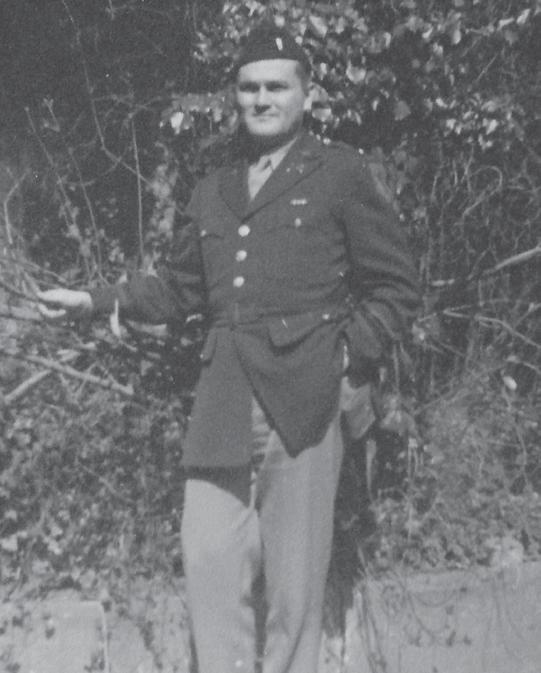
4 minute read
THE ART OF DISGUISE Inspecting a Spy’s Life
How did a college student from Kansas become the Chief of Disguise for the Central Intelligence Agency? Here’s a look at a spy’s life.
BY JULIE WENGER WATSON
For most of us, our concept of a spy’s life is based on a mix of Hollywood blockbusters or best-selling novels – full of adventure, travel, and romance, with never a dull moment. However, reality is often stranger, and far more interesting, than fiction. Jonna Mendez, the CIA’s former Chief of Disguise, will speak at Tulsa Town Hall on April 28 to share some of her experiences from the real world of espionage. A retired intelligence officer with 25 years of service, her perspective is unique and fascinating.
[NOT IN KANSAS ANYMORE]
Born in Kentucky and raised in Wichita, Mendez’s life took an adventurous spin when she attended a friend’s wedding in Germany after her sophomore year at Wichita State. When the newlyweds headed to their honeymoon in Italy, Mendez decided she would stay.
“There I was in this relatively small town in Germany, not speaking a word of the language and just loving where I was,” she said. “It was everything that Kansas was not – lusciously green, hilly, and mysterious.”
It was the first in a series of serendipitous events that set her on her career path.

Speaking no German, without a work permit, and with no previous banking experience, Mendez managed to land a secretarial job with the president of the Frankfort branch of Chase Manhattan Bank. There she met a group of Department of Army civilians who stopped in regularly to cash checks. “I started dating one of them, and a year and a half later, I married him. That was [Mendez’s first husband] John Goeser. He told me shortly before we got married that actually, he wasn’t a civilian working for the military. He was a CIA officer,” Mendez recalled. “That’s how I got into the CIA. I married into the CIA. I don’t recommend this as an entry point for almost anybody, but that’s how I got inside.”
Her start in the CIA as a secretary left her bored, so she sought other opportunities. Mendez built on her existing photography skills to become a Photo Operations Officer, leading to her first encounters with the world of disguise.
“We weren’t taking pictures with regular cameras,” she said. “We were taking pictures with unbelievably strange cameras in strange places, like a camera in a fake pregnancy belly of a woman walking down the street.”
Later, after a temporary assignment in the Middle East left Mendez with the desire to relocate to that part of the world, she trained intensively as a Disguise Officer to qualify for an open position. It was a decision that determined the rest of her career, first as Deputy Chief of Disguise, and then as Chief of Disguise, with a staff of 70 under her supervision worldwide.
[DISGUISE AND INTELLIGENCE GATHERING]
According to Mendez, the CIA is about collecting intelligence on our country’s enemies, and more specifically, their plans and intentions.
“There are a lot of reasons to wear a disguise,” she said. “When you’re meeting with a Russian agent, for example, a CIA officer might want to go wearing what we would call a ‘light disguise,’ something that would give the United States deniability that we’re trying to tinker with somebody’s internal politics. Or if you’re sitting in a cafe in Paris, meeting with an agent, and your neighbor from Wichita walks by and says, ‘Hi, Jonna,’ but you’re not ‘Jonna.’ That happened frequently enough that this was actually a consideration. There are a million reasons to have disguises and to wear them and use them.”
As Mendez points out, the CIA doesn’t just disguise people.
“We disguised all kinds of things. We could disguise a car by changing its color and its license plates in a heartbeat. We’ve disguised parts of buildings. We’ve disguised a person as a dog lying in the backseat of a car going through a security check,” she said.
[THE ELEMENTS OF DISGUISE]
According to Mendez, a successful disguise is as much about the person wearing it as it is the props used to create it. While the vast majority of people Mendez disguised were men, working with female officers was always a pleasant change.

“When you got a woman in your disguise labs, it was so much fun because women are into it,” she says. “We’ve been disguising ourselves since we were 12.”
Marines, with their rigid military posture and their hesitation or even refusal to wear a wig, were a particular challenge. Bald men, however, were usually cooperative.

“I once had a Chief of Station who was going out to a very interesting place. We gave him a very expensive, really well made, custom, natural hairpiece to wear every day. Nobody knew he was bald. His disguise was to take off his hairpiece,” she said. “He was bald with glasses in his disguise, and he had a full head of hair and no glasses when he wasn’t in disguise. Of course, he loved the experience because, for two years of an assignment, he had hair.”
Confidence, says Mendez, also helps.
“You can take the best disguise in the world and put it on someone a little timid, and you can see through the disguise,” she said. “On the other hand, you can take just a few props and give them to someone who’s a little more into it, and they can convince the world that they are this alternate person. Your confidence in wearing a disguise is hugely important.”
When Mendez thinks about the philosophy of disguise, she imagines a scenario where her office is preparing an American agent to meet with a foreign intelligence officer.
“[The foreign agent] is going to go back to their office, and they’re going to say, ‘I met with this







